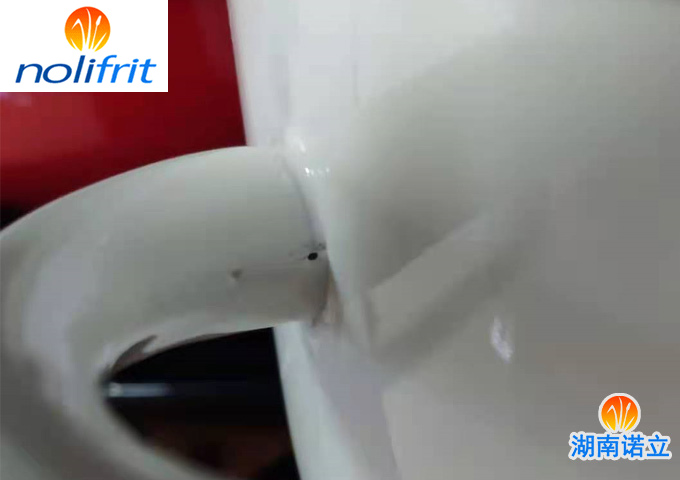Causes of Porcelain Enamel Bubble Defect
Both the iron substrate and the enamel will generate gas during firing. Most of these gases will be discharged smoothly before reaching the firing temperature. If the gas has not been discharged when the porcelain layer is fused, it will become a "bubble"; the air pressure in the bubble will break through the porcelain that is about to solidify. The surface of the layer becomes a "hole".
If you can pay attention to the hygienic process and control the firing temperature, the cell will not become the main defect of the steel plate enamel products. The non-ferrous composition of cast iron is dozens of times higher than that of steel plate, and the wall thickness of the blank is also more than 20 times larger. Therefore, the cell is a common defect of cast iron enamel products.
Bubble holes can be roughly divided into boiling, bubble, side bubble, wire mesh bubble, welding bubble, pinhole, bullet point, burst point and frame eye.
1. Boiling
Agglomerated tiny bubbles and pores are produced during firing, which makes the porcelain surface apparently lose gloss and sponge-like defects. The main reasons for its formation are the following nine aspects: ① The steel plate contains too much C, S, and P. ②The steel plate has pores, delamination and slag. ③The pre-treatment of substrate is not clean. ④ The enamel cannot be melted through. ⑤ Excess electrolyte in enamel slurry (excess sodium nitrite is the most obvious). ⑥The temperature in the mill is too high when grinding the enamel ground coat in summer (precautionary measures: keep watering the ball mill in high temperature season). ⑦The firing temperature of the ground coat is too high and the time is too short. ⑧The storage time of the ground coat is too long. ⑨The flue gas in the firing chamber creates a reducing atmosphere.
2. Bubbles
There are six main reasons for the formation of bubbles: ①The steel plate has too much hydrogen dissolved or contains too much carbon, sulfur, and phosphorus. ②The steel plate has pores, delamination and slag. ③The pre-treatment of substrate is not clean. ④ The enamel cannot be melted through. ⑤ Impurities are mixed in the enamel slurry. ⑥ The ground coat is fired.
3. Side bubble
Cells at the bottom edge of the product. The main reasons for its formation are the following three aspects: ① The blank curling is too tight. ②The inside of the coil is not clean. ③ Excessive powder accumulation in the coil tube.
4. Anti-foam
The inner and outer porcelain surfaces of the product are blistering at the same position. There are two reasons for its formation: ①There are impurities in the steel plate. ② Excessive pickling of the iron substrate.
5. Wire mesh bubble
The porcelain layer is cracked, and there will be a series of netted cells that will be completely fused in the future. The reasons for its formation are as follows: ①The ground coat is too thick and the firing is insufficient. ②The semi-finished product has been impacted or squeezed. ③The temperature of the baking blank before decorating is too high. ④The burning temperature is too low.
6. Welding bubble
Cells generated at the welding point between the accessory and the blank. There are three reasons for its formation: ① There are oil stains and welding slag in the welding place (precautionary measures: degreasing, pickling and then welding). ②Welding is not uniform. ③The ring-handle roll tube is not well ventilated.

7. Pinhole
The porcelain layer is as deep as the tiny cavities of the iron substrate. There are three reasons for its formation: ① The six-point cause of bubbles also applies to pinholes. ② Too much sulfur is enriched on the surface of cast iron. ③There is too much cementite in the cast iron, and pinholes in the porcelain layer at the local white mouth of the casting become pieces.
8, bullet point
When firing, the cover coat shows dot-like scars that expose the ground coat. There are two reasons for its formation: (1) Insufficient firing of the ground coat. ②The cover coat slurry is mixed with impurities.
9. Breaking point
When firing, the ground coat is removed and the base metal of the ground coat is exposed. There are three reasons for its formation: ① The surface of the substrate is not clean. ②The ground coat is damaged. ③The temperature of the ground coat firing furnace is low and the firing is insufficient.